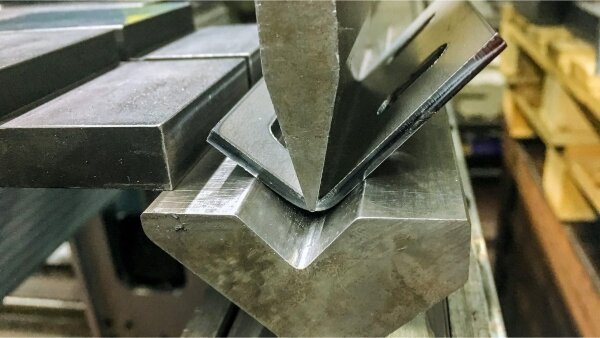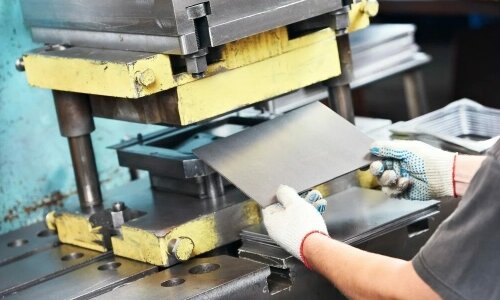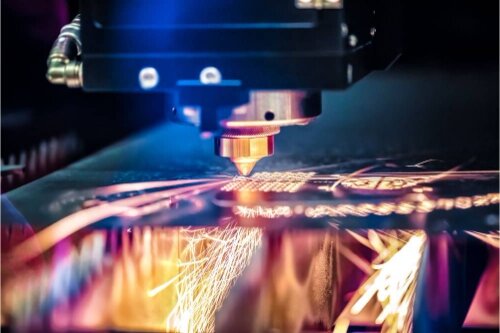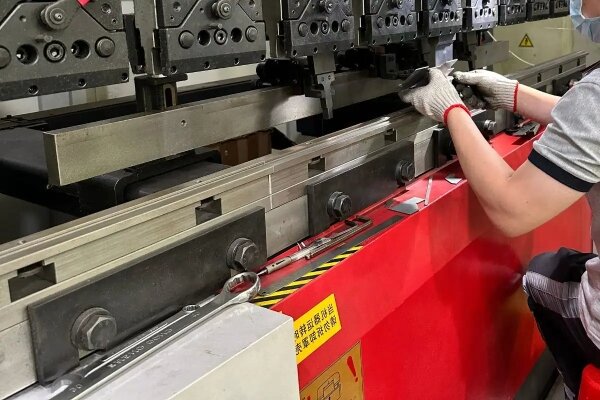As peças metálicas enfrentam ameaças constantes de ferrugem e corrosão, levando a substituições e manutenções dispendiosas. Os revestimentos de proteção tradicionais são muitas vezes insuficientes, desgastando-se rapidamente ou proporcionando uma cobertura inadequada. O revestimento Dacromet resolve estes desafios com a sua fórmula única de zinco-alumínio, proporcionando uma proteção superior em diversas aplicações industriais.
Quer saber como esta tecnologia de revestimento avançada pode prolongar a vida útil das suas peças e reduzir os custos de manutenção a longo prazo? Vamos examinar os pormenores técnicos, as vantagens e as melhores aplicações do revestimento Dacromet.
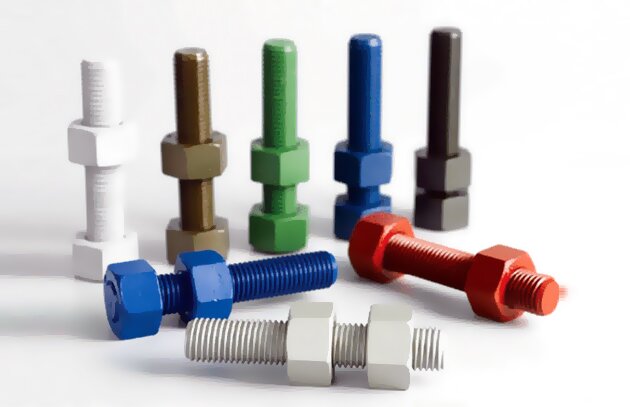
O que é o revestimento Dacromet?
O revestimento Dacromet combina flocos de zinco, pó de alumínio e compostos inorgânicos numa solução à base de água. Este sistema de revestimento avançado forma uma barreira de várias camadas através de um processo preciso de aplicação por imersão e rotação seguido de cura a alta temperatura.
Pense nisto como a construção de um escudo para superfícies metálicas - mas um escudo que é mais inteligente do que os revestimentos tradicionais. O processo começa com a imersão das peças na mistura de revestimento, girando-as para garantir uma cobertura uniforme e depois curando a cerca de 300°C. Isto cria uma camada protetora com cerca de 7-8 μm de espessura.
As partículas de zinco actuam como guardiãs de sacrifício, sofrendo o impacto dos elementos corrosivos antes de atingirem o metal de base. Entretanto, os flocos de alumínio criam uma barreira física e o aglutinante inorgânico mantém tudo no lugar enquanto controla a ação sacrificial do zinco.
Tipos de revestimento Dacromet
Diferentes aplicações exigem diferentes níveis de proteção e caraterísticas de desempenho específicas. Os fabricantes oferecem diversas variantes do revestimento Dacromet, cada uma concebida para utilizações e condições ambientais específicas.
A camada de base é a fundação, com flocos de zinco-alumínio misturados com aglutinantes especializados para criar uma camada protetora de cor prateada. Esta fórmula básica prepara o terreno para revestimentos mais especializados.
Eis uma descrição dos principais tipos:
Série Dacromet:
- 310/320: Perfeito para fixadores e nascentesutilizando uma formulação à base de crómio hexavalente
- 500: Possui propriedades auto-lubrificantes, ideais para componentes automóveis e de energia eólica
Série Geomet (sem crómio):
- 720: Concebida para fixadores e peças automóveis, utilizando tecnologia à base de silicatos
- 321: Oferece uma proteção fiável para aplicações de construção e automóveis
- 500: Inclui propriedades auto-lubrificantes para reduzir o atrito
- 320/360: Contém um teor mais elevado de alumínio para uma resistência superior ao calor, especificamente concebido para componentes dos travões
O processo de revestimento Dacromet
Transformar peças de metal em bruto em componentes resistentes à corrosão requer um controlo preciso e equipamento especializado. Um processo de revestimento bem sucedido exige uma atenção cuidadosa aos materiais, métodos de aplicação e medidas de controlo de qualidade.
Materiais utilizados no revestimento de Dacromet
A escolha dos materiais adequados é fundamental para criar um revestimento Dacromet eficaz. Cada componente desempenha um papel específico na camada protetora final.
Os materiais principais incluem:
- Flocos de zinco: Inibidor primário de corrosão
- Pó de alumínio: Melhora as propriedades de barreira
- Aglutinantes inorgânicos: Fixam as partículas metálicas no seu lugar
- Aditivos especializados: Controlam a viscosidade e o fluxo
- Suportes à base de água: Permitem uma distribuição homogénea
Processo passo-a-passo da aplicação do revestimento Dacromet
O processo de revestimento segue uma sequência precisa:
Preparação da superfície
- Limpar cuidadosamente as peças para remover óleos e contaminantes
- Tratamento químico ou com jato de areia das superfícies para uma aderência óptima
- Inspecionar as peças quanto à limpeza e ao perfil da superfície
Aplicação do revestimento
- Mergulhar as peças na solução Dacromet
- Rodar a velocidades controladas para garantir uma cobertura uniforme
- Permitir a secagem inicial ao ar em condições controladas
Processo de cura
- Aquecer as peças a cerca de 300°C
- Manter a temperatura durante um determinado período de tempo
- Frio em condições controladas
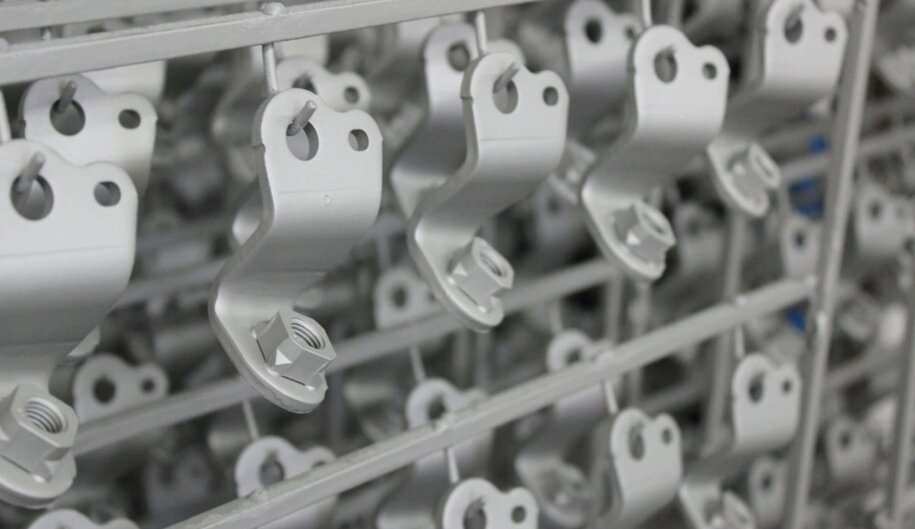
Benefícios do revestimento Dacromet
A tecnologia de proteção de metais continua a evoluir, e o revestimento Dacromet destaca-se pelos seus benefícios abrangentes. Esta secção analisa as principais vantagens que fazem do Dacromet a escolha preferida para a proteção de metais em todas as indústrias.
Resistência à corrosão aprimorada
O revestimento Dacromet cria múltiplas barreiras contra elementos corrosivos através da sua estrutura única em camadas. Os flocos de zinco-alumínio formam um escudo impenetrável que bloqueia a penetração de humidade, sal e produtos químicos.
Principais caraterísticas de proteção:
- Resiste a mais de 1.000 horas de testes de névoa salina
- Previne a formação de ferrugem vermelha
- Resiste à exposição química em ambientes industriais
Maior durabilidade e longevidade
A estrutura multi-camada do revestimento Dacromet aumenta significativamente a vida útil dos componentes. Esta durabilidade traduz-se numa menor frequência de substituição e em custos de manutenção mais baixos.
Métricas de desempenho:
- Mais de 20 anos de vida útil em condições normais
- Elevada resistência ao desgaste
- Forte aderência aos metais de base
Resistência a altas temperaturas
O Dacromet mantém as suas propriedades protectoras numa vasta gama de temperaturas. Esta estabilidade térmica torna-o adequado para componentes expostos a ciclos térmicos.
Desempenho em termos de temperatura:
- Estável até 300°C (572°F)
- Sem amolecimento ou fissuração sob calor
- Mantém a aderência durante as flutuações de temperatura
Aspectos ecológicos do revestimento Dacromet
O processo de revestimento está em conformidade com as normas ambientais modernas. A sua formulação à base de água e os métodos de produção reduzem o impacto ecológico.
Benefícios ecológicos:
- Zero emissões de COV
- Conformidade com REACH e RoHS
- Peças revestidas recicláveis
Requisitos de manutenção reduzidos
Uma vez aplicado, o revestimento Dacromet exige uma manutenção mínima. As propriedades de auto-regeneração do zinco proporcionam uma proteção contínua sem manutenção regular.
Vantagens de manutenção:
- Não é necessário um revestimento periódico
- Auto-reparação de pequenos riscos
- Mantém a aparência ao longo do tempo
Desvantagens do revestimento Dacromet
Apelo estético limitado
O revestimento produz um acabamento cinzento e mate que pode não se adequar a todas as aplicações. Em comparação com outros tipos de revestimento, as opções de cor permanecem restritas.
Vulnerabilidade a danos mecânicos
Apesar das suas qualidades protectoras, o revestimento Dacromet pode ser danificado por um forte impacto ou abrasão. Objectos afiados ou cargas pesadas podem também comprometer a integridade do revestimento.
Tempo de cura mais longo em comparação com outros revestimentos
O processo de aplicação de várias camadas requer condições e tempo de cura específicos. Este facto prolonga os prazos de produção em comparação com métodos de revestimento mais simples.
Potencial para uma espessura de revestimento inconsistente
A técnica de aplicação afecta a uniformidade do revestimento. As geometrias complexas das peças podem resultar em variações de espessura que afectam os níveis de proteção.
Custo inicial de aplicação mais elevado
O equipamento especializado e o controlo do processo necessários para o revestimento Dacromet resultam em custos iniciais mais elevados. Este investimento inicial deve ser ponderado em relação aos benefícios a longo prazo.
Aplicações do revestimento de Dacromet
O revestimento Dacromet serve várias indústrias onde a proteção do metal contra ambientes agressivos é crucial. Esta solução de revestimento versátil cumpre requisitos de desempenho específicos em vários sectores, desde o automóvel até às aplicações marítimas.
Aplicações na Indústria Automotiva
O sector automóvel depende fortemente do revestimento Dacromet para proteger os componentes críticos do sal da estrada, da humidade e da exposição ambiental. Este revestimento ajuda os fabricantes a cumprir normas de durabilidade rigorosas, reduzindo simultaneamente os pedidos de garantia.
Aplicações automóveis comuns:
- Componentes do sistema de freio
- Peças de suspensão
- Fixadores do chassis
- Suportes de montagem do motor
- Componentes do sistema de combustível
Utilizações aeroespaciais e militares
Em aplicações aeroespaciais e de defesa, o revestimento Dacromet cumpre especificações de desempenho rigorosas. O revestimento protege os componentes expostos a condições extremas e climas variáveis.
Principais utilizações militares e aeroespaciais:
- Fixadores estruturais
- Componentes do trem de aterragem
- Hardware externo
- Equipamento de apoio no solo
- Suportes de montagem
Projectos de construção e infra-estruturas
A indústria da construção valoriza o revestimento Dacromet pela sua proteção a longo prazo dos componentes estruturais. Este revestimento ajuda a prolongar a vida útil das infra-estruturas em ambientes difíceis.
As aplicações de construção incluem:
- Componentes da ponte
- Barreiras de proteção para auto-estradas
- Fixadores de construção
- Estruturas de apoio
- Juntas de dilatação
Aplicações Marinhas
Os ambientes marinhos exigem uma proteção superior contra a corrosão. O revestimento Dacromet proporciona uma excelente resistência contra a névoa salina e a exposição constante à humidade.
O sector marítimo utiliza:
- Ferragens do convés
- Equipamento portuário
- Plataformas offshore
- Acessórios para navios
- Componentes do contentor
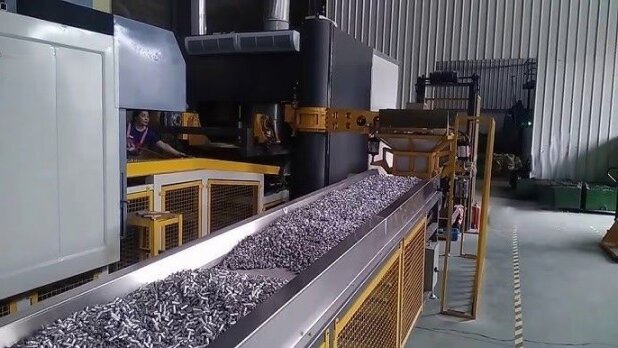
Revestimento Dacromet vs. Zincagem
Fazer a escolha correta entre as opções de revestimento afecta tanto o desempenho como os resultados em termos de custos. Esta comparação ajuda os decisores a selecionar a solução mais adequada para as suas necessidades específicas.
Diferenças críticas na resistência à corrosão
Os dois métodos de revestimento proporcionam diferentes níveis de proteção contra ambientes corrosivos. Os testes mostram variações de desempenho distintas em condições difíceis.
Comparação da resistência à corrosão:
- Dacrometo: Mais de 1.000 horas de resistência à névoa salina
- Zincagem: 200-300 horas de resistência à névoa salina
Mecanismos de proteção:
- O Dacromet cria várias camadas de barreira
- A zincagem baseia-se numa proteção de sacrifício
- Os riscos de exposição aos metais de base diferem significativamente
Custo-benefício
Os custos iniciais e o valor a longo prazo apresentam diferentes cenários económicos para cada tipo de revestimento. Uma análise exaustiva revela o verdadeiro impacto dos custos ao longo do tempo.
Factores de custo a considerar:
Dacrometo:
- Investimento inicial mais elevado
- Custos de manutenção mais baixos
- Vida útil alargada
Zincagem:
- Custos iniciais mais baixos
- É necessário um revestimento mais frequente
- Despesas a longo prazo mais elevadas
Comparação de durabilidade e desempenho
O desempenho no mundo real difere significativamente entre estas opções de revestimento. As condições ambientais e os requisitos de aplicação influenciam a longevidade do revestimento.
Métricas de desempenho:
Resistência à temperatura:
- Dacrometo: Até 300°C
- Zincagem: Até 120°C
Consistência da espessura:
- Dacrometo: Cobertura uniforme
- Zincagem: Acumulação variável
Resistência ao impacto:
- Dacrometo: Flexibilidade moderada
- Zincagem: Mais frágil
Resistência química:
- Dacrometo: Alta resistência
- Zincagem: Resistência moderada
Conclusão
O revestimento Dacromet prova o seu valor através de uma proteção anticorrosiva superior e de benefícios de custos a longo prazo. Embora o investimento inicial possa ser mais elevado, a vida útil alargada e a manutenção reduzida fazem dele uma escolha inteligente para aplicações exigentes. A conformidade ambiental do revestimento e o seu historial comprovado em todas as indústrias fazem dele uma solução fiável para os desafios do fabrico moderno.
Para além do revestimento Dacromet, oferecemos soluções abrangentes de fabrico personalizado para todas as suas necessidades. Com equipamento avançado e uma equipa técnica profissional, podemos satisfazer as suas diversas necessidades em Maquinação CNC, fabrico de chapas metálicase muito mais. Escolha-nos para tornar o seu processo de fabrico mais eficiente e contínuo.
FAQs
Qual é a duração do revestimento Dacromet?
Em condições normais, o revestimento Dacromet tem uma duração típica de 20-25 anos. A vida útil efectiva depende da exposição ambiental e das condições de aplicação. As inspecções regulares ajudam a monitorizar o desempenho do revestimento ao longo do tempo.
O Dacromet Coating pode ser aplicado em todos os materiais?
O revestimento Dacromet funciona melhor em substratos de aço e ferro. Embora possa ser aplicado noutros metais, o processo de revestimento requer condições de superfície e métodos de preparação específicos para garantir uma aderência adequada.
O Dacromet Coating é seguro para o ambiente?
A fórmula à base de água não contém metais pesados ou solventes nocivos. O revestimento Dacromet cumpre os actuais regulamentos ambientais a nível mundial, incluindo as normas REACH e RoHS. O processo produz o mínimo de resíduos e emissões.
O Dacromet contém crómio hexavalente?
Não, o revestimento Dacromet não contém crómio hexavalente. Em vez disso, utiliza compostos de crómio trivalente, o que o torna compatível com as normas ambientais e de segurança modernas.
Qual é a espessura do revestimento do Dacromet?
A espessura padrão do revestimento Dacromet varia entre 5 e 15 microns. A espessura exacta depende dos requisitos da aplicação e do nível de qualidade especificado. As medidas de controlo de qualidade garantem uma espessura de revestimento consistente em todas as peças.
Olá, chamo-me Kevin Lee

Nos últimos 10 anos, tenho estado imerso em várias formas de fabrico de chapas metálicas, partilhando aqui ideias interessantes a partir das minhas experiências em diversas oficinas.
Entrar em contacto

Kevin Lee
Tenho mais de dez anos de experiência profissional no fabrico de chapas metálicas, especializando-me em corte a laser, dobragem, soldadura e técnicas de tratamento de superfícies. Como Diretor Técnico da Shengen, estou empenhado em resolver desafios complexos de fabrico e em promover a inovação e a qualidade em cada projeto.

